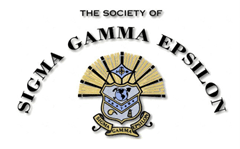Abstract
Introductory geology labs stress simple physical testing (luster, hardness, etc.) to identify common minerals, using mineral charts to eliminate minerals not exhibiting a particular property. Special properties (magnetism, specific gravity, taste, etc.) for specific minerals narrows mineral identity. Students often express safety concerns about licking minerals, especially when they realize others have previously licked the specimen. As an exercise in medical geology, we cultured microbes from a halite sample used for nearly 25 years and licked by numerous students over that time span (Sample 1), a commercially purchased unused and freshly exposed surface of halite licked by one person (Sample 2), and a disinfected sample repeatedly licked by only one person (Sample 3), to determine microbial presence, especially those potentially harmful to students applying the taste test. From the new crystal licked by one person (Sample 2), we identified sixteen different phenotypic groups of microorganisms after incubation of the crystal in growth medium. 16S ribosomal RNA sequence analysis was performed on one representative from nine of the sixteen groups. From this analysis, we obtained one species of Bacillus, four of Paenibacillus, and four of Staphylococcus, including Staphylococcus epidermidis. Comparing our results to published studies of the human tongue biome, we find that all of our cultured microbes occur naturally within a typical person’s mouth and do not pose significant health risk as used in lab. Saliva with microbes can be transmitted as the halite is reused, especially if the test is administered quickly after a previous licking, so caution is warranted, but the process is essentially safe under normal conditions.
Recommended Citation
Banks, Kesley G.; Gibson, Michael A.; and Pritchett, Matthew A.
(2024)
"Isolating microbes from the surface of an introductory laboratory halite hand sample,"
The Compass: Earth Science Journal of Sigma Gamma Epsilon:
Vol. 93:
Iss.
2, Article 5.
DOI: https://doi.org/10.62879/c54082977
Available at:
https://digitalcommons.csbsju.edu/compass/vol93/iss2/5
